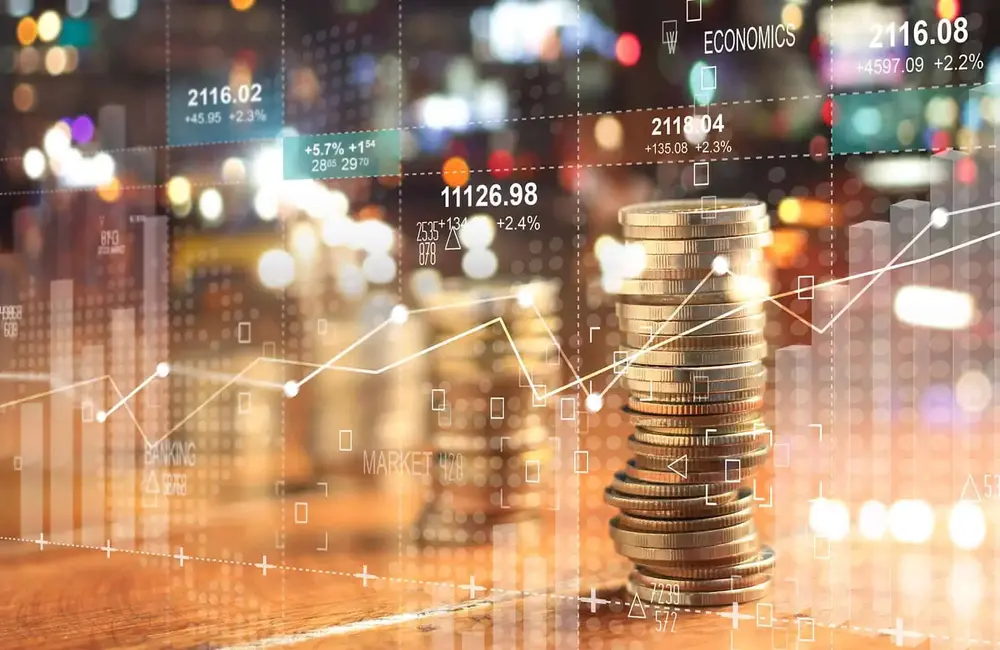ASX futures were up 27 points, or 0.4 per cent, to 7278 at 8.00 am AEST, pointing to a positive start to trade.
The S&P 500 ended 1.2 percent higher on Thursday. It is up nearly 5 percent this week so far, which would mark its largest weekly advance since late 2020. All 11 of the S&P 500’s sectors were in the green earlier Thursday. The tech-heavy Nasdaq Composite Index tacked on 1.3%. The Dow Jones Industrial Average rose 1.2%.
Share markets are slowly clawing back some ground after last week’s losses, with sentiment still being buffeted by the repercussions of Russia’s invasion of Ukraine. US shares were lower early in the day as Russia indicated peace talks were not going anywhere. A late-afternoon rebound took hold after US banks reportedly processed payments on Russian debt, reducing the prospect of a sovereign default.
Equities remained in the black even as oil snapped a three-day losing streak and surged 9.1% to US$106.98.
“This suggests that we’re not at the end of this conflict, that the situation with commodity prices is not about to get better, which makes it tougher for sentiment,” said Esty Dwek, chief investment officer at FlowBank.
At home, the S&P/ASX 200 finished 1.1% firmer at a one-month peak of 7250.8 as tech and financial stocks surged after the Federal Reserve’s interest-rate rise.
Gains were helped by the tech sector leading the move for the second day in a row, led by a 10% surge in Block’s ASX-listed securities. EML Payments gained 7.2% after analysts had positive things to say about its expansion into European employee-benefits provision.
Retail banks CBA, NAB and ANZ each gained about 1.3%, while Westpac slipped after Jefferies and Morgan Stanley raised concerns about costs.
GrainCorp retreated from its record high, falling 2.8% and dragging the consumer-staples sector lower.
There is a creeping shift forward in economists’ expectations of when the RBA will hike its first interest rate. Morgan Stanley on Thursday became the latest to join the camp that puts the first hike in August (previously November) this year as it argued the threshold for an increase will be crossed sooner than ultimately expected.
Commodity markets were back up next after falling for much of the week, gold futures were up 1.8% to $1943.20; Iron ore was up 1% to US$146.90 per tonne; Brent Crude was up 9.1% to US$106.98.
US 10-Year Treasury Note yields fell to 2.17%, ending a three-day increase a day after the US Federal Reserve lifted rates for the first time since 2018. For investors, the bank’s move to raise rates could be a comforting sign that inflation will be reined in. The Australian 10-year bond yield was little changed at 2.50%. Yields rise when prices fall.
Asia
Chinese shares closed the session with gains, extending a sharp rebound in Wednesday as sentiment remained upbeat from pledges of market-friendly measures from China’s top policy makers, including milder regulation of the heavyweight technology sector. The benchmark Shanghai Composite Index increased by 1.4%, while the Shenzhen Composite Index added 2.2%. The tech-heavy ChiNext Price Index also outperformed the other two benchmarks, gaining 2.9%. The upturn was driven by shares of property companies, makers of home appliances and stocks related to interior decoration, boosted by officials’ display of backing for the ailing real-estate sector, as well as the government’s decision to suspend an expansion of property tax trials.
Hong Kong shares added to the climb with the Hang Seng Index closing up 7.0%, jumping on Chinese policy makers' commitment to support the market, according to Oanda. “The China equity route of the medium-longer term, the Chinese government is drawing a line in the sand,” it said. “There are a few days of algo and retail investor [fear-of-missing-out] exuberance to go. There was broad-based upside led by Country Garden Services which jumped 30%, Country Garden Holdings, Wuxi Biologics and JD. com which rose 28%, 20% and 16%, respectively. The HSI has now risen 4.2% from one week ago, though it remains at 8.1% for year-to-date losses.
Japanese stocks ended mostly higher, led by sharp gains in electronics stocks as the yen has recently weakened and crude oil prices have dropped. Lasertec soared 9.7% while Fanuc rose 7.1%. SoftBank Group rose 5.9% as Chinese tech stocks surged. The Nikkei Stock Average added 3.5%. Investors are still focused on the war in Ukraine and its effect on commodity prices and international trades.
Europe
European stocks see-saw as investor vigilance over central-bank moves, Ukraine/Russia uncertainty intensifies. The broad pan-European Stoxx Europe 600 added 0.45%.
“Risk-on moves have relaxed as we head into Thursday, though the weaker pound in the aftermath of the BoE has given the FTSE another reason to stand tall,” IG analyst Chris Beauchamp says. “Today sees a more muted tone across markets, with any desire to extend the gains seen over the last two days countered by central bank actions and diminished hopes for progress on Ukraine negotiations.”
In London, the FTSE 100 was up 1.25 percent on Thursday, helped by a weaker pound following the Bank of England’s decision to increase interest rates. The Bank of England increased its key policy rate to 0.75 percent from 0.5 percent, its third straight increase in three meetings. Britain’s economy was likely to grow more slowly because of the rising energy prices and its guidance for more tightening of monetary levers was less aggressive, according to investors, the central bank added.
“After the rate hikes from the Fed and BoE traders are on the back foot and yesterday’s optimism in markets has been largely washed out,” IG Group says. Not that the BoE could be accused of a rush job, but even its recent pace of hikes is starting to look too rapid — the pound has handed back its gains against a range of currencies as this more dovish tone is digested by markets in coming days and weeks, it cautions.
North America
U.S. stock indexes climbed for a third consecutive day, putting the S&P 500 on track for its largest weekly gain since late 2020.
Stocks opened little changed on Thursday but pushed their way into the green late in the morning and then accelerated their gains into the close. Indexes ended near their highs of the session.
The moves suggest traders are starting to take a second look at how the war in Ukraine will affect the US stock market. Stocks, in fact, clung to gains in the face of a jump in crude prices, and investors said they are shrugging off oil market gyrations prompted by the war more than they once did. Other investors said they were instead concentrating on the better valuation of US stocks.
“It might remain volatile until we get a little clearer on Russia, but underlying this is really good fundamentals,” said Jim Paulsen, chief investment strategist at the Leuthold Group.
The S&P 500 advanced 1.2 percent to close the session. It has risen nearly 5 percent so far this week, which would mark its biggest weekly gain since November 2020. The broad-market gauge jumped more than 2% each on Tuesday and Wednesday. All 11 sectors of the S&P 500 were in the green on Thursday.
The tech-heavy Nasdaq Composite Index advanced 1.3%. The Dow added 1.2 percent.
Some of the largest market swings involved oil, which has been extremely volatile because the war threatens to curb Russia’s place as a powerful oil supplier. The US crude benchmark rose 8.4% Thursday to settle at $102.98 a barrel. Brent crude, the global standard, gained 9.1 percent to close at $106.98 a barrel. The S&P 500 energy sector rose about 3.5%. Devon Energy Corp. rose 9.6%, or $5.06, to $57.52. Occidental Petroleum Corp. rose 9.5%, or $5.02, to $58.01. Marathon Oil Corp. climbed 6.9%, or $1.48, to $23.07. Diamondback Energy Inc. climbed 6.6%, or $8.25, to $133.88.
Oil recently changed hands at more than $130 a barrel, compared with around $90 before the war began. Traders have struggled to establish a new price range for oil since the war began, said Jason Ware, chief investment officer at Albion Financial Group.
“Whenever you get a jolt like this, it’s going to rattle equity markets and it will take some time for stocks to discount this new environment,” Mr. Ware said.
After a punishing downdraft this year, stocks have started to rally in recent days. Investors took note of renewed cease-fire talks between Ukraine and Russia, although reports described little progress, pulling sentiment lower.
The recent gains have been made as the Federal Reserve announced it would raise interest rates for the first time since 2018 in an effort to eject inflation that’s at decades-long highs. The central bank also penciled in an additional six rate increases for this year.
While the central bank's approach has turned more hawkish, it “wants to try to engineer a soft landing, and that’s actually quite a positive outcome for equities,” said Adrian Zuercher, the head of global asset allocation at UBS’s chief investment office.
Mr. Zuercher said signs that the Fed was willing to let inflation overshoot its 2 percent target; most officials now expect core inflation to end the year at 4.1 percent were evidence that policy makers were fixated on ramping up the economy’s recovery rather than stifling it.
The yield on the benchmark 10-year Treasury note eased back a bit, ending at 2.177% after closing at 2.185% on Wednesday, ending a three-day run of higher yields. Yields fall when prices rise. Selling of shorter-dated bonds, more sensitive to fluctuations in monetary policy, subsided with the two-year yield falling to 1.939% after rising for eight trading sessions.
U.S. weekly jobless claims fell to 214,000, below the prior week and matching what economists had forecast. Long-term jobless claims, the proxy for layoffs, have been hovering near historically low levels as the labour market remains tight.
U.S. bonds tend to do well during periods of sluggish economic growth, something many investors now anticipate because of the Fed’s plans to tighten the economy. “There’s also a risk-off aspect with the conflict,” Ms. Dwek said.
Traders said they remained worried about longer-term supplies of energy, and that the boycotting of Russian oil by shipping companies and banks is now hitting the market, after pre-planned trades before the invasion. The International Energy Agency said in a report on Wednesday that sanctions against Russia could lead to a supply shock.
The price of gold, a classic haven asset, rose 1.8 percent, or $34.10, to end at $1,942.10 a troy ounce, snapping a four-session losing streak.

























